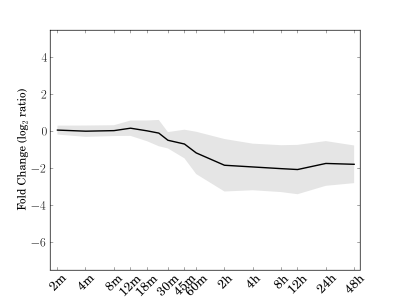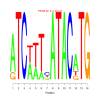Module 49 Residual: 0.21
| Title | Model version | Residual | Score |
|---|---|---|---|
| bicluster_0049 | v02 | 0.21 | -8.01 |
Displaying 1 - 16 of 16
| Cre01.g045902.t1.1 ATP binding | Cre02.g097550.t1.2 YebC-related |
| Cre03.g145887.t1.1 Sec-independent periplasmic protein translocase | Cre03.g183850.t1.2 2Fe-2S ferredoxin-like superfamily protein |
| Cre03.g201776.t1.1 Ubiquitin-conjugating enzyme family protein | Cre04.g231222.t2.1 chaperonin-60alpha |
| Cre06.g284900.t2.1 cyclophilin 5 | Cre08.g373436.t1.1 |
| Cre08.g375550.t1.2 | Cre09.g386753.t1.1 |
| Cre10.g439900.t1.2 heat shock protein 70 (Hsp 70) family protein | Cre10.g448800.t1.1 Ribosomal protein S5 domain 2-like superfamily protein |
| Cre12.g532000.t1.1 | Cre13.g589400.t1.1 CAP (Cysteine-rich secretory proteins, Antigen 5, and Pathogenesis-related 1 protein) superfamily protein |
| Cre14.g625750.t2.1 Tic22-like family protein | Cre14.g627488.t1.1 GLU-ADT subunit B |
|
e.value: 15000 Motif Bicluster: Width: 11 Number of Sites: 1 Consensus: ATTAtTTTGgG |
motif_0049_2Submitted by Anonymous (not verified) on Wed, 05/20/2015 - 14:16e.value: 1400 Motif Bicluster: Width: 14 Number of Sites: 1 Consensus: ATCatTcATACaTG |
Displaying 1 - 1 of 1
| Interaction | Weight | |
|---|---|---|
Displaying 1 - 1 of 1
| GO Terms | Descriptions |
|---|---|
| Not available |




Comments